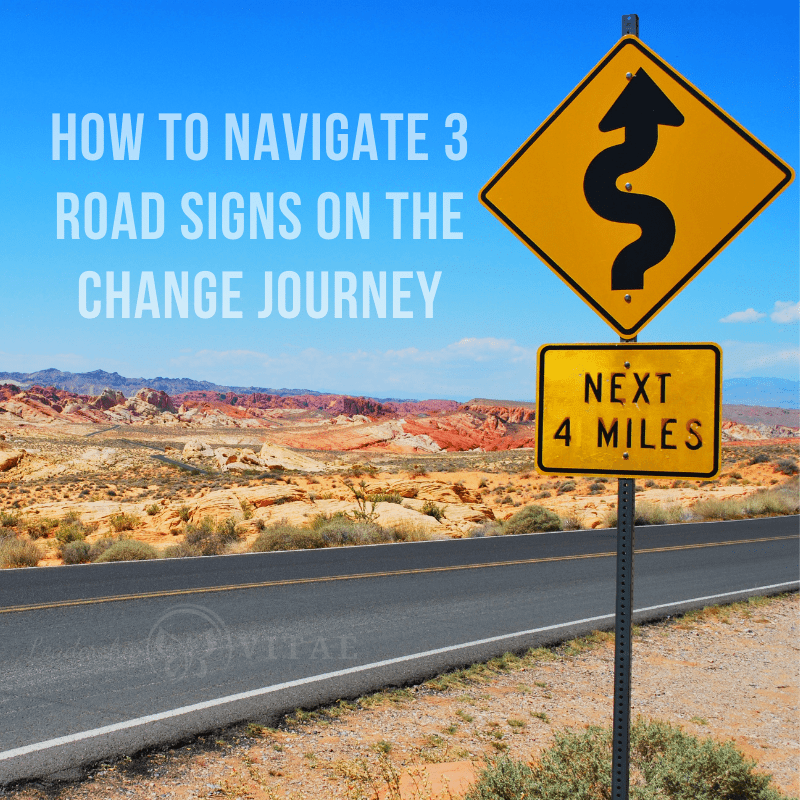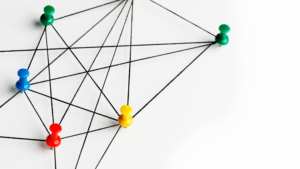
In today’s environment, as we navigate uncertain and unprecedented times, change is the word of the day. The expression “change is the only constant” was coined ahead of it’s time, as 2020 has established a new bar.
Every employee, manager, parent, teacher…we’ve all had to become change leaders. Whether we’ve been trained for it or not. We are leading change in our homes, offices, classrooms, and relationships. It’s everywhere.
As someone who has been leading change for decades, I don’t know that any of us could have trained for this time. No matter how prepared or experienced, there’s no user manual on this depth, breadth, and concurrency of change.
While there may not have been a way to prepare, we can leverage tools of change leadership to help us navigate the road ahead.
Starting within, we can lead ourselves through change so that we can lead others. Whether that is our family, friends, co-workers, or teams, we can recognize what is happening and do our best to empathize, support, and provide whatever resources we can to move forward or adjust course.
There are three road signs we can look out for during change cycles. These signs are states of mind, and recognizing them can make the difference between apathy, frustration, acceptance and progress.
Three mindsets during change
Immobility
When there is continuous change happening in an organization, at home, or in the world at large, it can be overwhelming. The sense of overwhelm may result in inertia, or inability to take action.
Immobility may look like active resistance to a change. It could appear as increased errors, fewer units produced, or a hand that doesn’t get raised for a project. Maybe it’s not helping peers or procrastination on assignments.
It’s worth noting that we (and others) may be channeling energy to where it’s needed most. If that’s work, we may be immobile at home. If that’s home, we may find ourselves immobile at work.
Wait and See
Some of us prefer to wait and see. During the chaos of change, we focus on our day to day, or the work in front of us, and let things play out. We prepare to adjust course if need be, but want to know what’s happening where we are before we take action.
The wait and see mindset generally has patience to let milestones and committed timeframes arrive to make decisions. Once more information is known, then those with this mindset may take action to adjust their own course in response.
Because this mindset is patient, it might be easy to focus on the other two. However, patience can eventually run out. If committed timeframes continually come and go, and a promise hasn’t been delivered, wait and see might move quickly to charge ahead.
Charge Ahead
For years, I’ve lived by the mantra “In absence of direction, I’ll create one.” Many of us are prone to action, scanning the horizon for signals that tell us what’s ahead, so we can prepare and lean into change before it’s even arrived.
Those prone to action are ones that tend to raise their hands for new projects, or to participate in change. However, if they are not engaged as part of change and decision-making, these same individuals are likely to change what they can: their own decisions and outcomes.
Those that tend to charge ahead want to be engaged, have information about changes that affect them, and take action. During change, consider how to involve charge ahead mindsets, or at least keep them informed. They are unlikely to wait around unless you do.
Mindsets can and will shift
Our mindset is not static or fixed. It can change given the situation, environment, or in response to where we are in the change journey.
An example of shifting mindset is how individuals are navigating COVID. I’ve heard similar stories over the last few months, with many sharing what we’ve coined “the Corona wave.” I’ll share what that wave looked like for me, and which mindset I was in from peak to trough.
At the start of the pandemic lockdown, I was in charge ahead mode. I was affecting what I could, which meant reading everything I could get my hands on and filling the pantry.
It wasn’t long before I had nothing left that I could proactively do, and I went into a state of inertia. I got through the workday, and nights were spent on couch city with no energy.
The path forward began by accepting the unknowns and that the pandemic would be going on for a long while. I adopted a wait and see attitude, moving from one milestone to the next (the phases of reopening, for example) and adjusting my decision-making accordingly.
Identifying where we, and others, are in the change journey is key to setting expectations.
It makes no sense to expect anyone to take on a new project when we are caught up in inertia. However, if we are in a state of wanting to take action, it might be the perfect time to start. We just need to monitor how the energy level is changing over time, as non-stop energy can lead to burnout.
Adjusting Course
Some of us, me included, are naturally action oriented. The very idea of being immobile, or sitting back and waiting things out, may be an anathema.
Inertia is not inherently bad. Sometimes we need to save our energy in one area so we can expend it in another. It also might make sense to wait and see, to gather more information before making a decision.
When our current mindset and role or life expectations don’t align, that’s when it can become a challenge. For example, if we need to take action at work or at home, and are struggling to find the energy for decision-making and forward progress.
What are some steps to help if we find ourselves, or others, in a state that doesn’t match what’s needed?
1. Ask questions
Instead of assuming, consider a question to determine your own or others’ mental state and energy level. An example is “what are you experiencing right now at <home/work/school> and how are you navigating?”
2. Have grace
Next, acknowledge the reality of the current state. This is a time for grace. What any of us are feeling and experiencing right now is a response to heightened threat state. There is no “wrong” or “better.” Whatever state we are in is normal, even if it’s not a place we want to live permanently.
3. Take action, or not
It is only after we understand the current state, and acknowledge it, that we can determine the appropriate response.
- Consider inaction. In this moment, the current state might be appropriate, even if it feels unfamiliar. Revisit in the coming days and weeks. If there has been no change, it might be time for coaching (others) or to take action (self).
- Ask questions about rest or self-care if the current state is frenzied action. When we are the frenzied ones, consider sleep patterns, whether we are prioritizing physical activity, or taking time to slow down.
- To help move from inertia into wait and see, look ahead to when new information may be available. Provide perspective, as there may be some areas that have opportunity to affect forward progress.
- To move into action, help define incremental goals to look forward with a positive mindset. Identify small steps for action in areas that can be controlled, such as healthy coping mechanisms.
- If someone wants to be in action mode and is increasingly frustrated at an inability to act, is there a portion of the change where they can contribute?
- For action-oriented individuals that are tired of being immobile, they might be considering big changes as a way to exercise control. Those big changes may include major purchases or home/career moves. Suggest reviewing pros and cons, or alternative means to take definitive action.
Mindset matters
Our perspective creates our reality. Mindset matters, and the current chaos is likely playing havoc on it. There is no normal or baseline to anchor to, which means fluctuations are to be expected.
Knowing where we are in the change journey, and the mindset we are carrying with us, can help us set reasonable expectations for ourselves and others. It can also keep us and our teams engaged along the way by:
- Keeping an eye out for those caught up in immobility to help them step forward
- Providing periodic updates to those in wait and see mode
- Identifying actionable steps for the charge aheads
No matter the change, we can honor the current mindset, and step ourselves and others towards the ones that serve us best.








